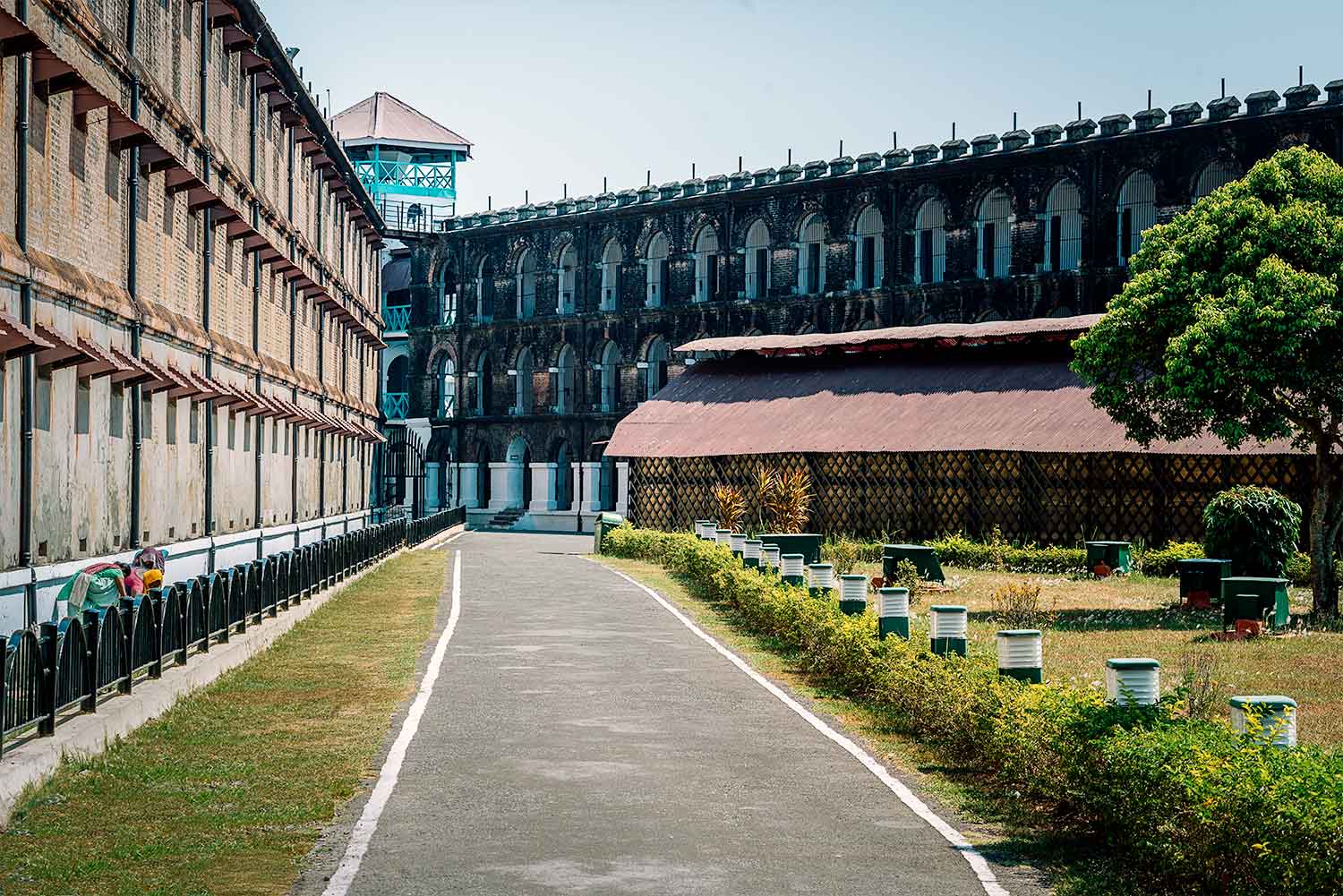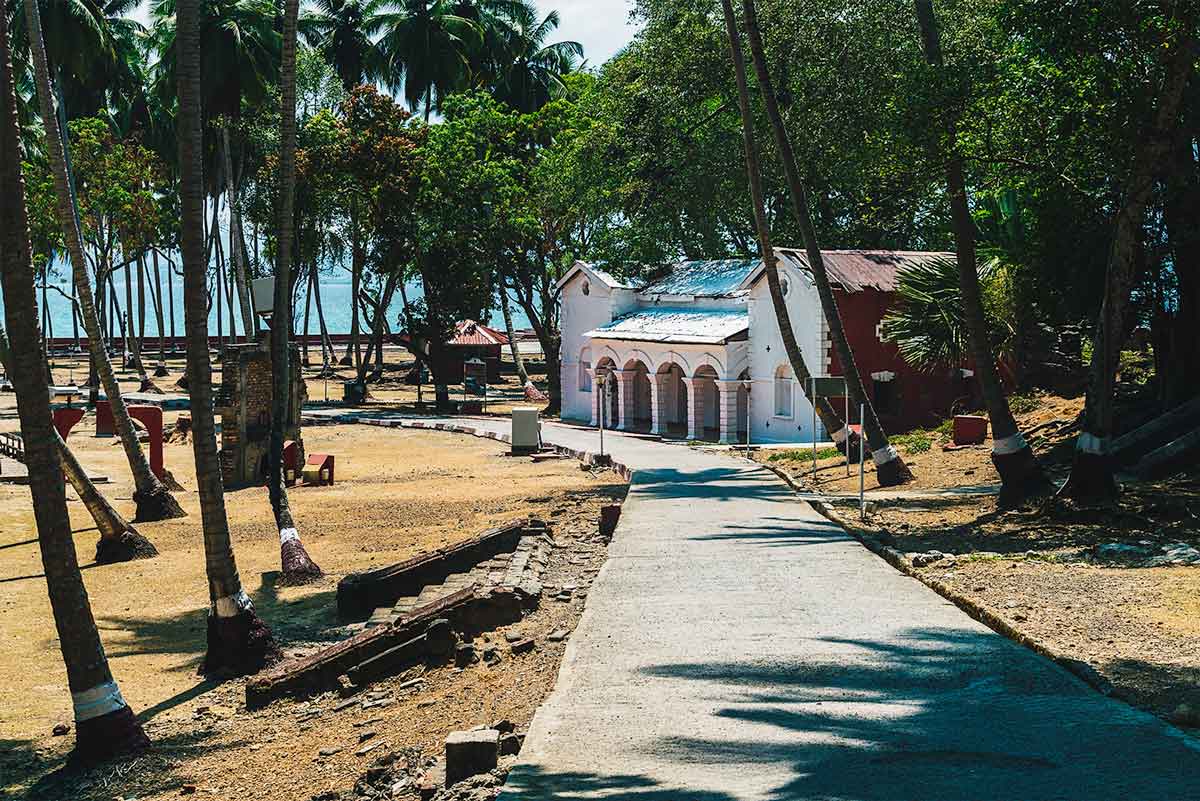The Cellular Jail in the Andamans
The Andaman Island’s Cellular Jail, the jailer settlement of the British on Ross Island, and the son et lumière at both places.

Prisoners on the upper levels of the Cellular Jail, if their cells faced Ross Island, should've been able to see that pearl of a place the British had made for themselves. It was comfort the colonisers rewarded themselves, planted as they were at a frontier post in which the main task was to administrate the most dreaded prison in this jewel in their crown. And, of course, they offered safe harbour to passing friendly vessels. At night the condemned men, if out of their cells for some punitive reason, could've watched the lights on Ross Island in the dark, a tiny settlement for whites, ten minutes away by boat.
All round, kala pani. Black waters, in the conservative Indian imagination. In truth, this vast bay is a brilliant green upon deep blue. Sometimes they're only a pure green. It's an uplifting sight for those who've arrived as free people. But for those condemned to these islands a thousand miles from home, the waters would've offered no colour, no hope.
The Jail Museum — and the daily sound and light show — pin most attention on one jailor: David Barrie, an Irishman, who was in charge from 1905 until 1919. He welcomed (the museum says) every fresh boatload of men in person, and asked them to think why the prison walls were so low. "There's only the sea on all sides for a thousand miles. So listen! On this island, I am God."
The jail is on a rise on the tip of the island. When it was whole in its time, its seven wings branched out from a central hub like bicycle spokes. Their lengths were unequal because they terminated on a polygonal perimeter. Each wing faced the back of the one in front, completing the utter isolation of the prisoners.
Savarkar was among the big names that did time in the Andaman, for ten years from 1911. His cell is marked with his name on the second floor of an inland-facing wing. Across from his cell, on the ground, stood gallows where three men could be released from their misery with one tug on a lever. Savarkar writes that the sounds of the bulbul eased his loneliness. In his cell as a tourist a hundred years after him, I heard the sparrows calling. But the overwhelming sound was of a quiet that must've been oppressive then.
On Ross Island, the English had engineered everything for the elegant life they put together anywhere they went in the world. There's now only the palimpsest of what was; time and the elements and the roots tall tropical trees have rooted out and crushed the structures. The façade and the back wall of a beautiful Presbyterian church are standing, and they're about to fall as well. A short walk from the church on the same height there survives the plinth of the Commissioner's bungalow with a few walls in the grip of trees. On some stretches on the floor, on some tiles the patterns worked into them have held. They are tasteful patterns, done on tiles for the exalted. This residence of the most important man in the settlement is on a high point. Going down from this height, you are surprised by a restored, fresh-painted building that has new life breathed into it — as a heritage structure. In its time it was the Ross Island bakery, turning out French bakes.
It's such a small island. But it held everything: a press; barracks; lighthouse; tennis courts, swimming pool; a clubhouse for junior commissioned officers and a clubhouse for the pukka officers; a market; bakery; large bungalows for whites; sequestered dwellings for Indian servants. The Tourism Department boards say Ross Island was then the Paris of the East. Well. Maybe. It must've been Paris of the East in Miniature.
When the Japs occupied the islands during World War II, they broke down many buildings for bricks with which to build bunkers and shelters, rendering waste Italian marbles and tiles, painted glasses in the church, and other fetching stuff with which the Britons had created their Little Paris.
Other than the bakery, only a portion of the barracks is restored on this island. The son et lumière uses the façade of the bakery to cast visuals. For me, this show is better conceived and executed than the one at the Cellular Jail, in which the narrative was, it seems to me, overwrought. Only, the Ross Island version is graphic, and the hangings and assassinations, as they're shown, are not for children. I counted nearly a dozen kids in the audience. The poet Gulzar has written the show and narrated the Hindi show. The English version is recorded by Shabana Azmi. It's all very emotional, intended to rouse. And the Indian who's seen the Cellular Jail is raw enough for the rousing.

